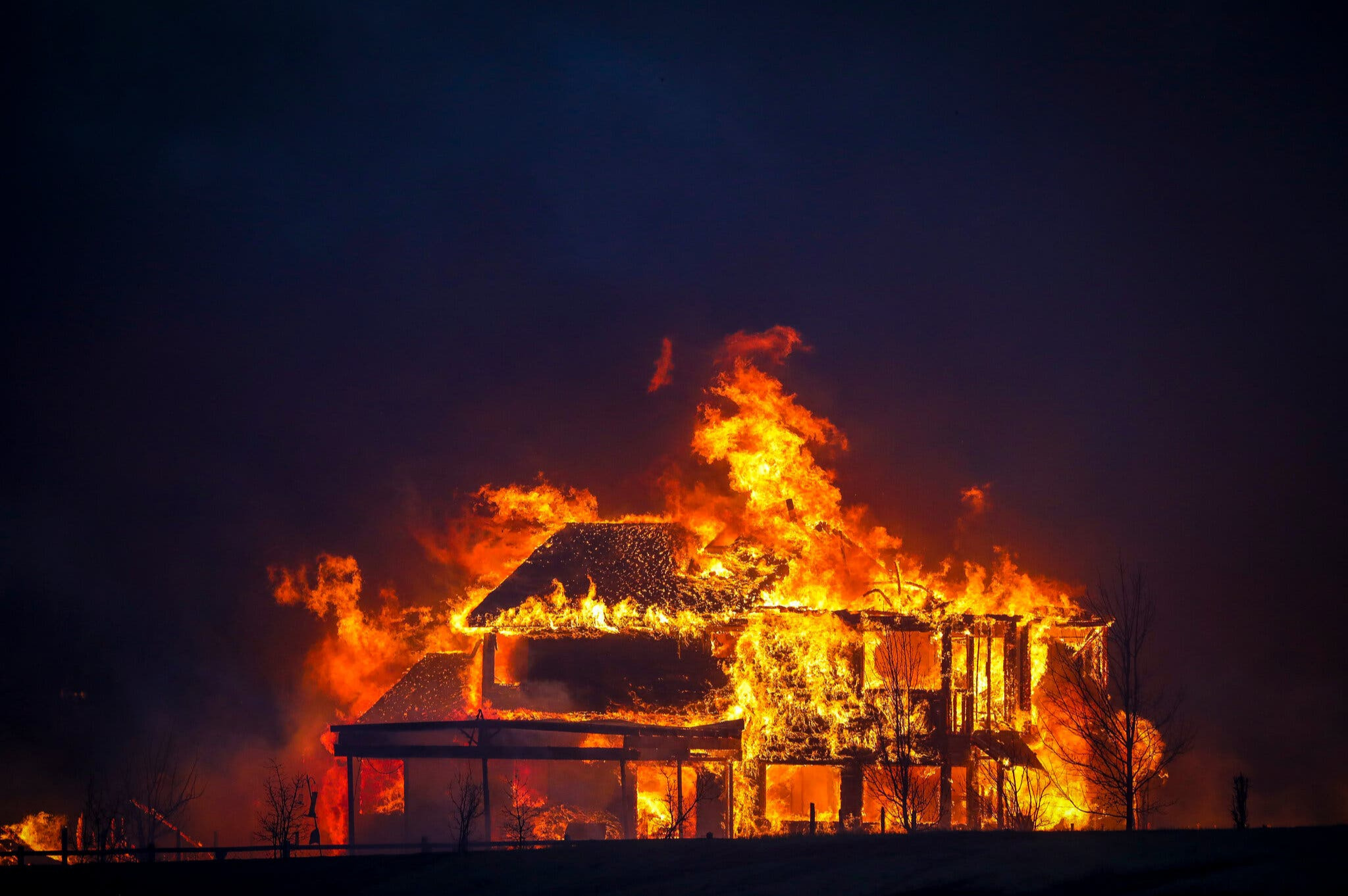
Official says the three missing people all lived in homes consumed by the wind-stoked urban wildfire.
Denver, January 2 (RHC)-- Three people are missing and feared dead after a wind-stoked wildfire roared through two towns in the U.S. state of Colorado, prompting thousands of evacuations and destroying nearly 1,000 homes.
Boulder County Sheriff Joe Pelle said on Saturday that the three missing people, whom he declined to identify, all lived in homes that were consumed by the blaze. “The structures where these folks would be are completely destroyed,” Pelle said at a news briefing.
Officials initially said there were no reports of fatalities or missing residents following the rare urban wildfire that erupted on Thursday morning on the northern outskirts of the Denver metropolitan area.
Wind gusts in excess of 100 miles per hour (160 kph) pushed flames eastward into the towns of Superior and Louisville, prompting the evacuation of both communities. In about two hours, the fire had scorched 6,000 acres, officials said.
Pelle said cadaver teams will be deployed on Sunday to search for the missing. But the task is complicated by debris from destroyed structures covered by 8 inches (20 centimeters) of snow dumped by a storm overnight, he said. At least seven people were also injured in the fire.
Pelle also said 991 homes in Superior, Louisville and in unincorporated parts of the county have been destroyed, making it the most destructive wildfire in state history in terms of residences lost.
Officials initially said sparks from downed power lines that were toppled by the gale-force winds may have sparked the blaze, but an inspection by utility company Xcel Energy found no damaged or downed lines near the fire’s believed origin. Pelle said detectives are investigating all avenues to determine what ignited the conflagration. Acting on a tip, the sheriff said a search warrant was issued in connection to the probe, but declined to offer any details.
U.S. President Joe Biden has declared the scene a national disaster, freeing up federal funds to assist affected people and businesses in recovery efforts, the Federal Emergency Management Agency said in a statement.
In Boulder County on Saturday, the snow and temperatures in the single digits cast an eerie scene amid still-smoldering remains of homes. The smell of smoke still permeated the empty streets as utility crews struggled to restore electricity and gas service to homes that survived.
Dozens of people lined up to get donated space heaters, bottled water and blankets at Red Cross shelters.
“It’s bittersweet because we have our house, but our friends don’t. And our neighbours don’t,” said Louisville resident Judy Givens as she picked up a heater with her husband. “We thought 2022 might be better. And then we had omicron. And now we have this, and it’s not starting out very well.”
Homes burn as a wildfire rips through a development near Rock Creek Village, Thursday, December 30, 2021, near Broomfield, Colorado [David Zalubowski/ AP]
Others meanwhile trudged through the snow to determine the condition of their homes and take belongings.
Viliam Klein bent over in grief when he saw the ruins of his 100-year-old home in Superior for the first time on Saturday. Smoke rose through the snow-covered ashes; a few neighbours walked past, carrying what they could from their own destroyed homes. “At this point I’m just honestly overwhelmed and I can’t feel much anymore,” Klein said.
The wildfire broke out unusually late in the year, following an extremely dry autumn and amid a winter nearly devoid of snow until the overnight snowfall. High winds pushed flames that fed on bone-dry grasses and vegetation on farmland and open spaces interspersed with suburban subdivisions.
Scientists say climate change is making weather more extreme and wildfires more frequent and destructive.
Ninety percent of Boulder County is in severe or extreme drought, and it had not seen substantial rainfall since mid-summer. Denver set a record for consecutive days without snow before it got a small storm on December 10, its last snowfall before the wildfires broke out. “It didn’t snow all winter of 2021. No wonder this all went up like kindling,” Klein said.

